Are you a bonsai enthusiast? Noticing your bonsai tree’s leaves dropping can be worrying. It’s a common issue that signals something isn’t quite right in your tree’s care. Let’s explore why your bonsai might be shedding leaves and how to help it thrive.
This guide will cover the main reasons for leaf drop, from environmental stress to improper watering and feeding. You’ll learn how to spot these issues early and take action to keep your bonsai healthy.
If you’re facing the challenge of a bonsai with falling leaves, you’re not alone. You can encourage your bonsai to grow strong and vibrant with the right knowledge and care. Let’s dive into the care tips that will help your bonsai flourish.
- Related article: Guide to Growing Bonsai Trees
5 Key Takeaways on Bonsai Tree Leaves Falling Off
- Bonsai trees might lose some leaves when moved or repotted as they get used to their new environment.
- Overwatering or underwatering can cause leaves to fall. Bonsais need well-draining soil and balanced watering.
- Changes in light, temperature, or humidity can stress bonsai trees, leading to leaf drop, especially indoors.
- Insects or diseases can weaken bonsai, causing leaves to fall. It’s important to spot and treat problems early.
- Not enough fertilizer can cause leaves to drop, while too much can damage the tree’s roots.
Why Do Bonsai Leaves Drop Off?
Bonsai tree leaves falling off usually indicates improper care. If you don’t cut away dead branches, overwater or underwater your plants, or don’t place them where they thrive, you will notice them wilting away.
Let’s go over some of the reasons your bonsai leaves drop off.
1. Overwatering
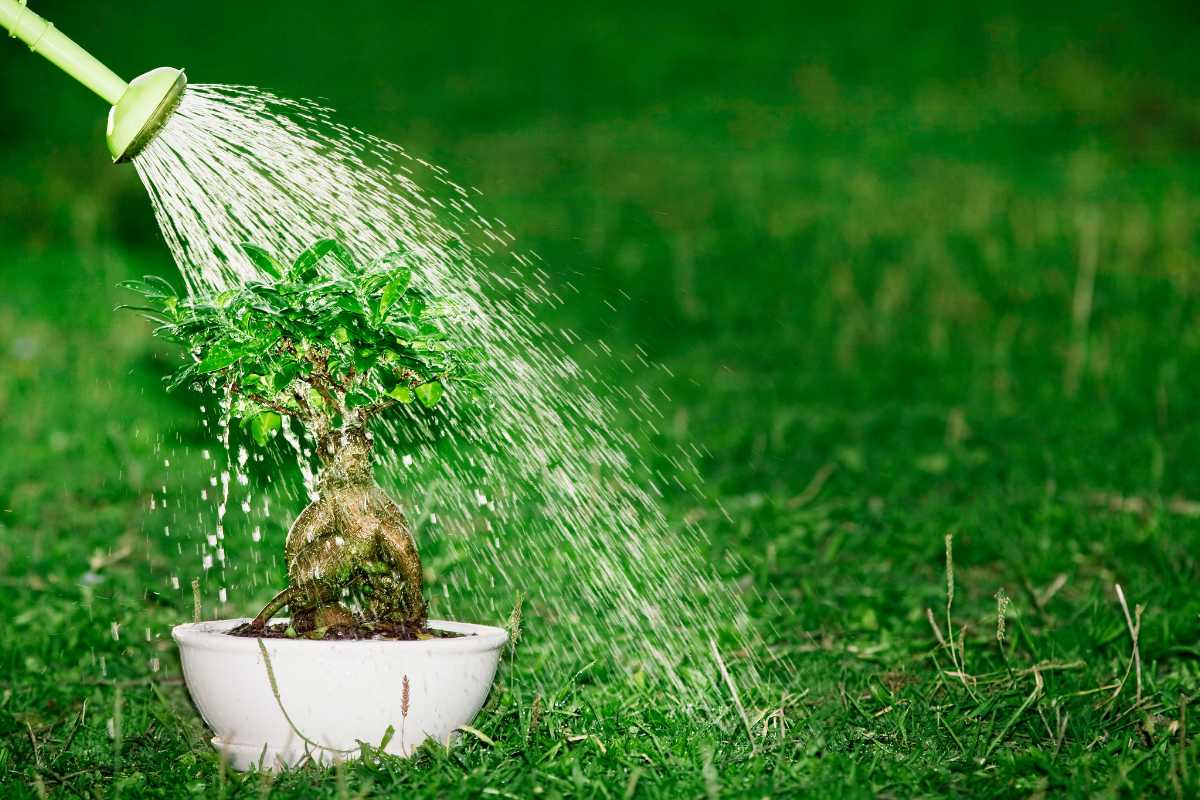
Too much water can cause your bonsais to rot. Generally, this happens when you water your bonsai more than once every 2-4 days. But this would also depend on your location and the type of bonsai tree you have. Some bonsai species can be watered less frequently.
Overwatering leads to root rot, which results in the leaves of your bonsai falling off. Root rot happens when bacteria get into your bonsai’s roots because of excess moisture.
Poor soil conditions also result in excess moisture for your plant. Soil for bonsai should be well draining so the roots can breathe and bacteria are unable to grow. Good quality soil also helps your bonsai absorb nutrients optimally.
A couple of other signs that you are overwatering your bonsais are:
- Wilting or Drooping Leaves – When the soil is too saturated, it may be difficult for your plant to absorb oxygen. This can cause its leaves to droop or wilt.
- Yellowing or Browning Leaves – Before your bonsai leaves start falling off, they will first turn yellow or brown. This means your roots are waterlogged and not able to absorb enough nutrients.
2. Underwatering
Bonsai need more water than most plants. That means they have to be watered regularly. That’s also why it’s important to use well-draining soil — you want to make sure to drain that excess moisture so the roots can breathe.
You will need to water more frequently during the spring and summer months, the growing season for bonsais. These are also hotter months and watering helps keep your plants cool.
Keep your pots in areas with high humidity. Whenever you notice the soil drying out, water your bonsais right away. Keep the soil moist — but not too moist — to prevent the leaves from falling off.
Here are some signs that your bonsais are underwatered:
- Wilting Leaves – Bonsai leaves will wilt and droop before they fall off if you don’t water your plant enough.
- Yellowing or Browning Leaves – Another indication that your bonsai tree is not getting enough moisture is yellowing or browning leaves.
- Dry Soil – Bonsai is a type of plant that needs more moisture than others. Make sure you never leave their soil dry.
- Slow Growth – Is your bonsai exhibiting stunted growth? It could be because you are not watering it enough.
When underwatering becomes severe, you may see bonsai leaves falling off. This is especially true of older bonsais, which tend to conserve their resources to survive.
3. Insufficient Light
Chances are indoor bonsais will receive less light than outdoor ones, and their leaves may start to drop as a result. That’s why you need to place them correctly. Pruning removes the leaves and branches, but they won’t grow back without proper photosynthesis that results from enough light.
Bonsais grown indoors should be placed in a sunny window or you’ll see leaves dropping. Some indoor plants can’t tolerate extreme weather conditions and changes, so be careful with putting them by drafty windows, heating vents, and air conditioners.
A common and immediately noticeable symptom of insufficient light is abnormal leaf drop. Your bonsai tree may shed leaves prematurely as a last resort to conserve resources. Other signs include:
- Susceptibility to Pests and Diseases – Stressed bonsai trees due to insufficient light are more prone to pest infestations and fungal diseases.
- Etiolated Growth – Bonsai trees deprived of light will exhibit elongated, spindly growth with pale, weak leaves. This is known as etiolation.
- Reduced Vigor – Lack of light can lead to overall reduced vigor, stunted growth, and a general decline in the bonsai’s health.
4. Poor Pot Drainage
Drainage holes in pots are essential for keeping soil moist, but not soggy. The drainage hole allows excess water to drain away from the pot. It prevents soil from becoming soggy.
When bonsai pots don’t drain properly, the following things can happen:
- Pest Infestation – Excess moisture creates an environment conducive to pests and diseases, which can further weaken the bonsai.
- Waterlogging – Poor drainage causes water to accumulate in the pot, leading to waterlogged soil. This condition deprives roots of oxygen, essential for healthy growth.
- Root Rot – Prolonged water saturation can result in root rot, a serious condition where roots begin to decay. This can lead to leaf drop and ultimately threaten the tree’s survival.
- Nutrient Deficiencies – Waterlogged conditions hinder nutrient absorption, causing deficiencies that manifest as yellowing leaves and stunted growth.
5. Overfeeding or Underfeeding
You need plant food for bonsai trees to grow well. Use both liquid and solid fertilizers based on your bonsai’s needs.
Without enough nutrients in the soil, leaves turn yellow-brown and shoots won’t grow right. Underfeeding causes leaves to drop. Your bonsai can’t fight diseases then.
Plants usually use osmosis where water moves from roots to leaves. But overfeeding causes plasmolysis. This makes fluids move the wrong way. Leaves lose color and fall off.
Feed bonsai about every month in the growing season. They need nitrogen, phosphorus, and potassium (NPK). Organic fertilizers have more nutrients than chemical ones. Use low-nitrogen feed during refinement.
6. Pests and Disease
If your bonsai trees continue to lose leaves even after following proper care tips, it could be due to a pest infestation or disease.
Pests can cause leaves to fall off of bonsai trees. Here are some common ones to watch out for:
- Aphids – Small, sap-sucking insects that cluster on new growth and undersides of leaves. They excrete a sticky substance called honeydew, which can lead to sooty mold.
- Spider Mites – Tiny red or yellow mites that thrive in dry conditions. They create fine webs on the undersides of leaves and can cause leaf discoloration and drop.
- Caterpillars – These can cause significant damage by eating leaves. They are often visible on the foliage.
- Vine Weevils – Known for notching leaves and burrowing into the soil to feed on roots.
You also want to be on the lookout for signs of the following diseases:
- Canker Disease – Characterized by swollen bark and pale leaves, often resulting from unhealed wounds or excessive nitrogen in fertilizers.
- Root Rot – Caused by overwatering and poor drainage, resulting in brown, mushy roots and an overall decline in health.
- Powdery Mildew – A fungal disease that appears as a white, powdery coating on leaves, often due to high humidity and poor air circulation.
- Black Spot – A fungal infection that manifests as black spots on leaves, leading to leaf drop.
- Rust – A fungal disease that produces orange or brown spots on the undersides of leaves, causing them to fall prematurely.
7. Recent Repotting
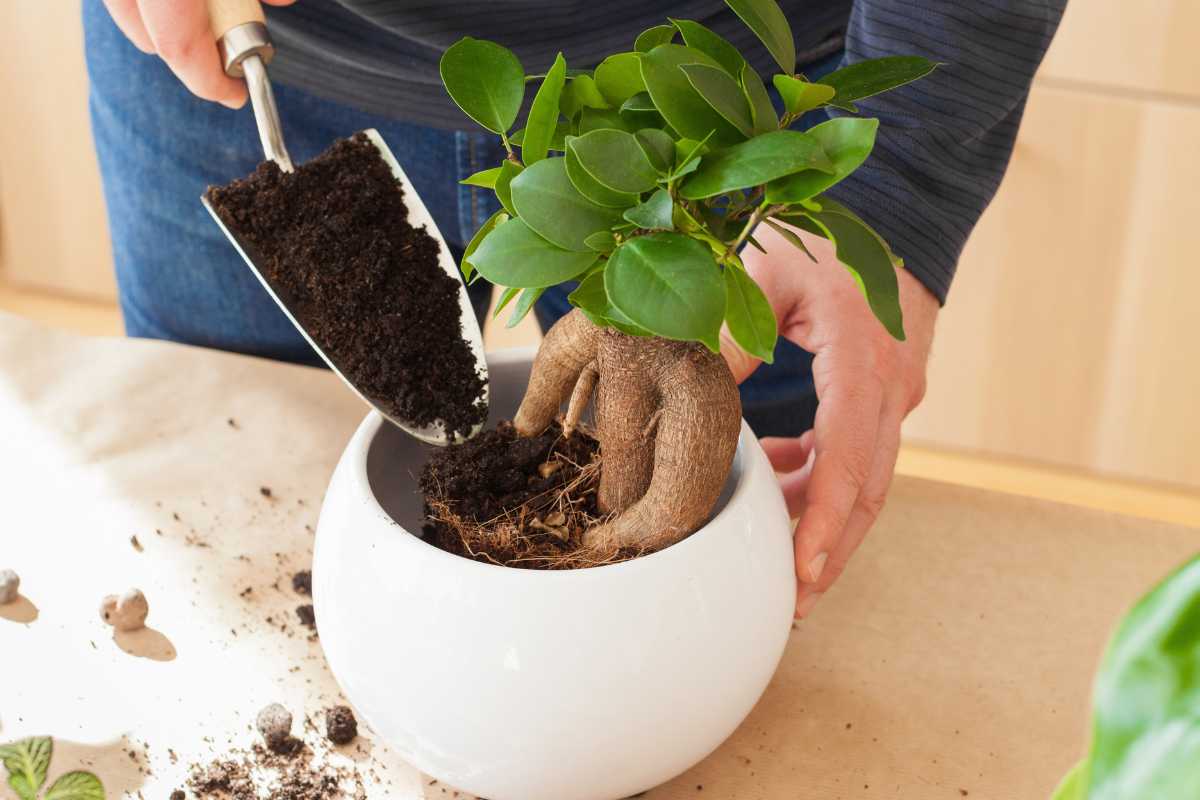
Repotting disrupts the roots, which can lead to transplant shock. This stress causes the tree to shed leaves as a survival mechanism to conserve resources. That said, the leaves will grow again if the soil is of good quality.
It’s best to repot in the early spring at the beginning of the growing season when the weather is starting to warm up for what most bonsai tree species like. These plants like the temperature range between 55° to 65°F.
After repotting, keep the soil slightly wet until the roots have established themselves. Watering too soon will kill the new roots. Wait at least two weeks before watering. Afterward, water once a week until the soil dries out completely.
Wait 3-4 weeks before feeding. This gives the bonsai enough time to establish itself in its new environment. Placing the repotted bonsai in direct sunlight without gradually acclimating it can also lead to leaf drop.
Solutions for Bonsai Leaf Drop
If your bonsai leaves start to drop, don’t panic. Here’s what you can do:
1. Improve Sunlight Exposure
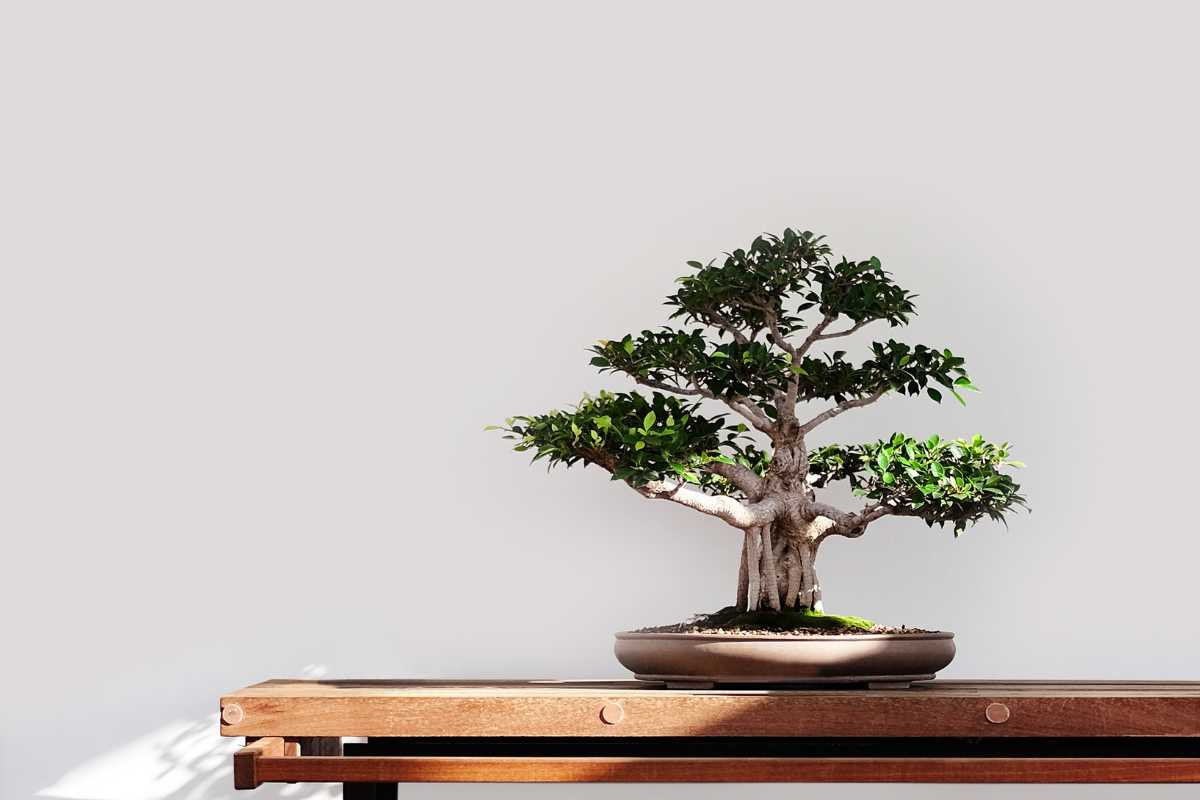
Bonsai trees need good sunlight exposure to grow properly. You can improve the amount of sunlight by placing them near windows or using artificial lighting.
How much light depends on the light requirements for the tree species that you chose. Putting bonsai pots on windowsills can give them plenty of light. Change the bonsai location to a south-facing window if you have one available.
Getting grow lights will help increase the amount of light available to the bonsai if you don’t have many windows.
2. Water Your Bonsai Properly
One of the best ways to prevent bonsai from dropping leaves is to keep it hydrated. Be careful of underwatering and overwatering the bonsai tree.
Underwatering means leaving the soil dry but keeping the pot filled with water. Overwatered bonsai will get soggy soil. It doesn’t matter how much water they’re getting as long as they’re not drowning.
When the top inch of the soil is dry, that’s an indication of water. Wait for the soil to dry before watering again.
3. Improve Soil Quality
Bonsai trees like well-draining bonsai soil. If your soil drains poorly, you may want to consider adding peat moss to your soil mix. Peat moss helps retain moisture and prevents the soil from drying out.
You should add peat moss to your bonsai soil mix only if you live in a humid area. Otherwise, you’ll risk having the bonsai tree develop fungus and rot.
- Learn more about Bonsai Soil Mixes
4. Balanced Fertilization
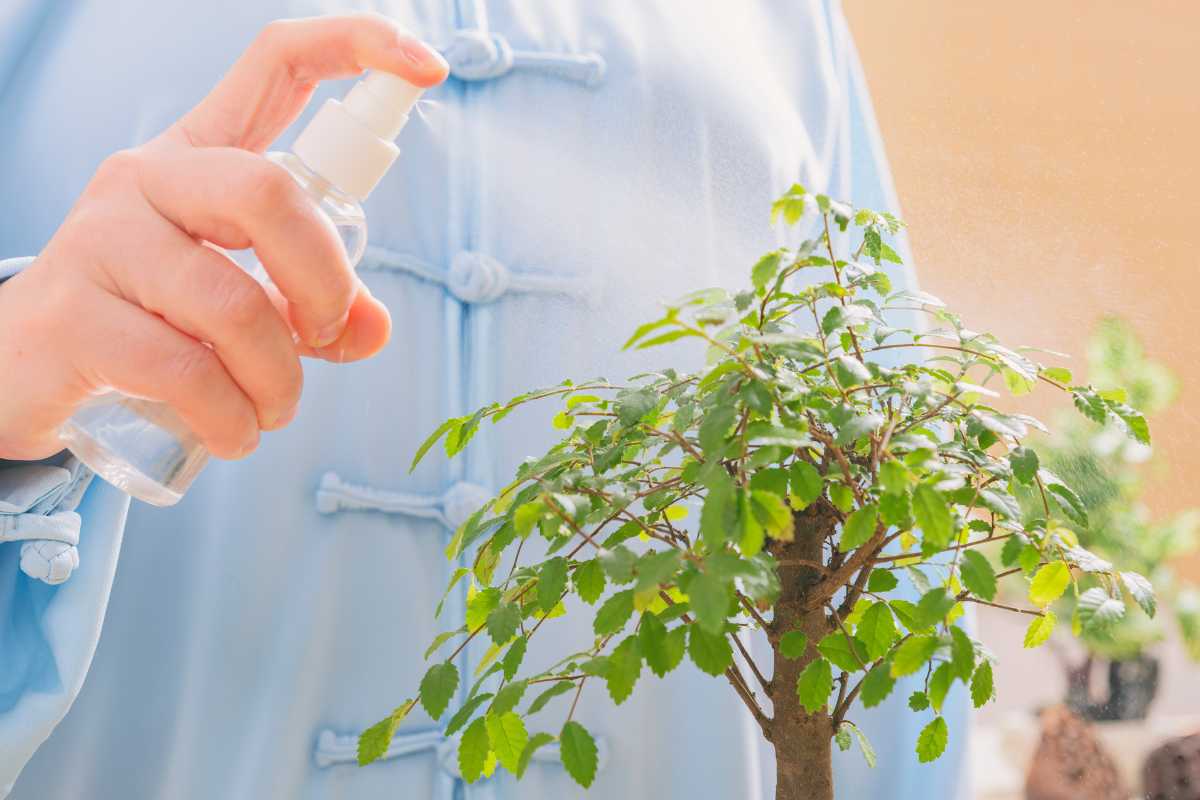
Feeding your bonsai too much can make its leaves fall off. When you feed it right, it helps water and nutrients move into the roots. This helps your bonsai grow strong and healthy.
You can use organic or synthetic fertilizer on the soil or roots. Liquid fertilizer should be diluted first. During the growing season, you can feed your bonsai every two weeks.
Synthetic fertilizers can harm soil bacteria and fungi. Organic fertilizers release nutrients slowly so you’re less likely to overfeed your bonsai.
Fertilize your bonsai once or twice a month when it’s growing. Choose an organic fertilizer with balanced nutrients. You don’t need to fertilize in winter because your bonsai is dormant then.
- Learn more about Bonsai Fertilizers
5. Disease and Pest Control
Check your bonsai trees for pests like aphids, scale insects, mites, or whiteflies. Look for signs like discoloration, spots, or odd growths that might signal disease.
If pests are causing trouble, separate the affected tree to stop the infestation from spreading. Use a soft brush or cloth to gently remove visible pests. If that doesn’t work, apply an insecticide or miticide by following the manufacturer’s instructions carefully. Keep an eye on the tree for any signs of pests returning and treat them quickly if needed.
Fungal diseases like powdery mildew, rust, or leaf spot can make leaves fall. Bacterial infections might also cause leaf loss. Remove any diseased parts of the tree like leaves, branches, or roots, and throw them away properly to prevent spreading.
Treat affected areas with a fungicide or bactericide as recommended for the specific disease. Make sure there’s good air circulation and avoid overwatering to stop the disease from coming back.
Indoor and Outdoor Bonsai Care to Prevent Leaf Drop
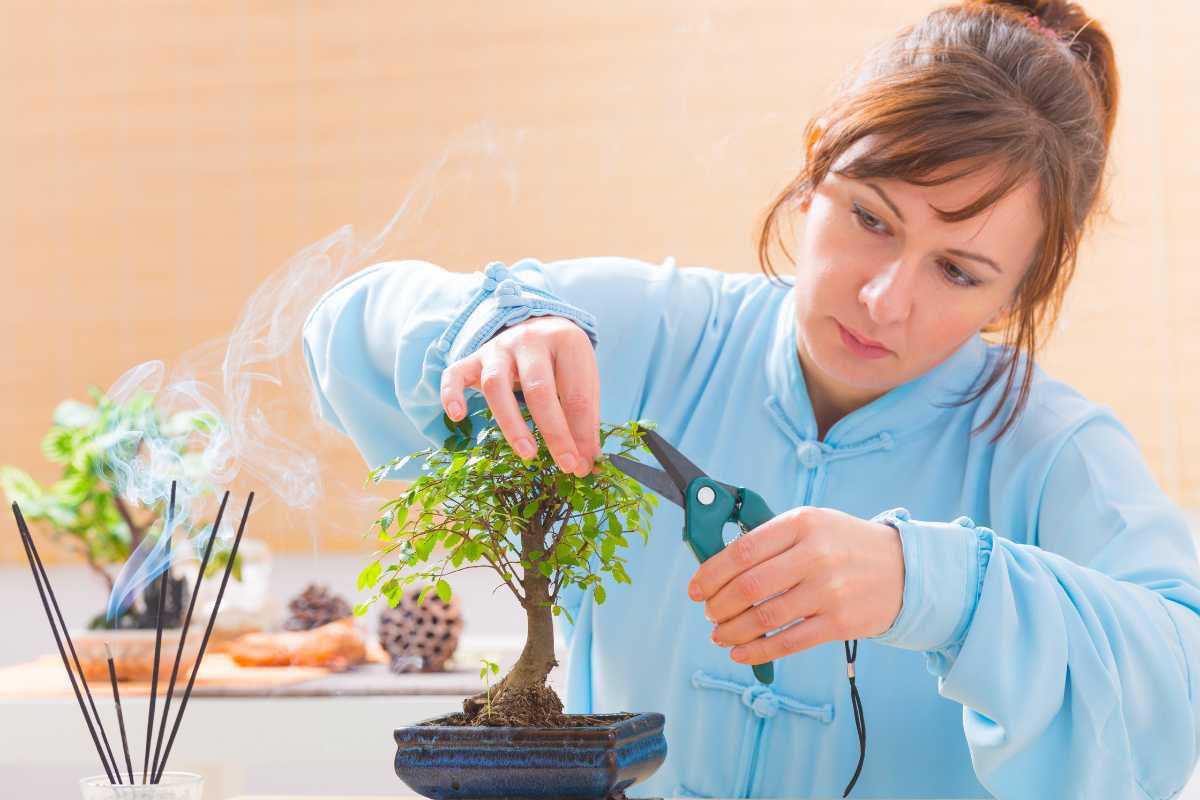
Taking care of your bonsai tree requires understanding and attention. Here are some straightforward tips to help you keep your bonsai healthy, whether it’s indoors or outdoors.
Indoor Bonsai Care Tips:
- Keep your indoor bonsai in a warm spot, above 60°F (15°C). Protect it from cold drafts and sudden temperature changes.
- Place your bonsai near a bright window but out of direct sunlight to prevent leaf scorch. If it doesn’t get enough natural light, use grow lights.
- Indoor air can be dry, especially in winter. Mist your bonsai’s leaves often or use a humidity tray to keep the air around it moist.
- Water your bonsai when the top layer of soil is dry. The soil should be damp but not soggy. Don’t let it dry out completely.
Outdoor Bonsai Care Tips:
- Just like indoor bonsai, water your outdoor tree when the soil is dry. Check the moisture regularly, especially in hot weather.
- Position your outdoor bonsai in a spot protected from strong winds and direct sunlight to avoid dehydration and leaf damage.
- Deciduous bonsai will lose their leaves in autumn. Make sure they have enough water before they go dormant.
Why Bonsais Lose Leaves in Winter and How to Help Them
Bonsai trees lose their leaves in winter, and that’s okay. It’s a natural way for them to save water during the cold months. When they drop their leaves, it’s like hitting the reset button, helping them stay healthy while they rest.
Now, not all bonsai trees are the same. Some keep their leaves thick and green all winter, thanks to their genes. Others have to let go of their leaves to make space for new ones in spring and fall.
Before winter hits, bonsai trees get ready by shedding leaves. This process, called overwintering, helps them survive the cold without getting hurt by frost. It’s something they do every year, but some trees are just better at it than others.
Keeping bonsai trees safe from the cold is important. If it gets too freezing, they stop growing and start saving energy. The best place for them is a greenhouse or a shed, where it’s a bit warmer. If that’s not possible, frost cloths are a good backup to keep them safe from freezing temperatures.
- Learn more in the full in-depth article on How to Protect Bonsai Trees in Winter
Why Bonsais Lose Leaves in Summer and How to Help Them
When it gets really hot, bonsai trees can have a tough time. You might see their leaves drooping or wilting. Sometimes, the leaves even start to dry out. But there’s a simple fix: make sure to water your bonsai regularly. This keeps the leaves from feeling heavy and helps them stay healthy.
Direct sunlight can also be a problem. It can make the leaves turn yellow and become brittle. To protect your bonsai, move it to a shaded spot. This way, it still gets bright, indirect light but not the harsh direct sun.
Be careful not to overfeed your bonsai. Giving it too much fertilizer can cause the leaves to yellow and drop off. Always use fertilizer sparingly. Too much can burn the leaves, making them look unhealthy.
Will Bonsai Leaves Grow Back?
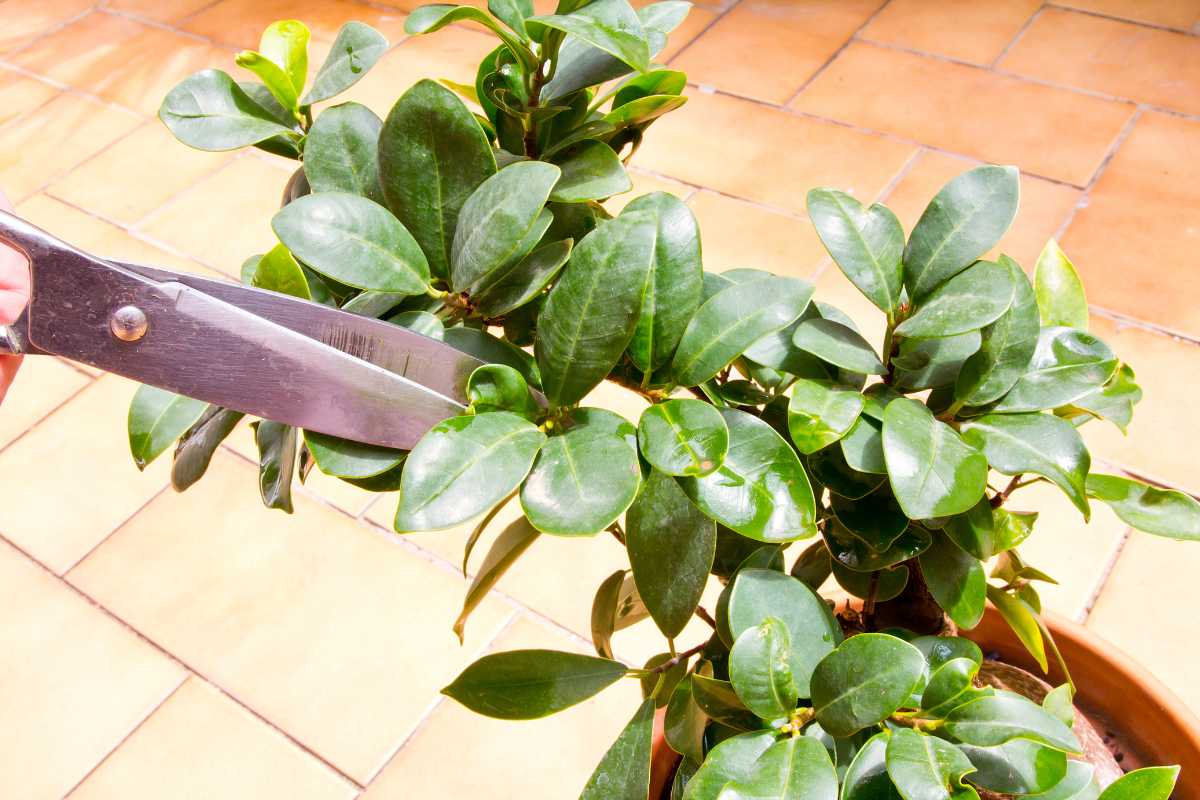
Yes, bonsai leaves will grow back with proper care. The keys to regrowth are consistent feeding, regular watering, and good air circulation. Make you have well-draining soil, so excess water doesn’t lead to root rot or other root issues.
Feed your bonsai once a week. Use a fertilizer that is low in nitrogen and high in phosphorus and potassium. Avoid fertilizers containing copper and zinc because they can burn the foliage.
Water your bonsai thoroughly. It’s important to water deeply and evenly around the base of the trunk. Don’t let the soil become soggy though. Instead, water until the top inch of soil is completely saturated.
Bonsai recovery needs plenty of sunlight. Place your bonsai in an area where it receives plenty of bright indirect sunlight for several hours each day. Keep it away from drafts and cold winds.
Keep your bonsai healthy and those bonsai leaves will grow back.
Bonsai Leaves Falling Off Final Thoughts
Bonsai leaves falling off is often a sign of stress caused by environmental changes, improper watering, or lack of nutrients.
Whether it’s due to adjusting to a new space, inconsistent care, or pests and diseases, understanding these causes can help you take quick action to restore your bonsai’s health.
With balanced watering, proper light, and the right nutrients, your bonsai can thrive and maintain its beautiful foliage. Regular monitoring and timely adjustments will go a long way in keeping your bonsai strong and healthy.
For more bonsai tree articles, check these out:




